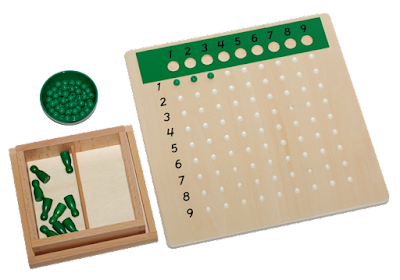In the world of early education, Montessori is a name that's become synonymous with a unique and effective approach to teaching. At its core, Montessori education prioritizes child-led learning and the use of specialized materials. In this blog, we will delve into the fascinating world of Montessori supplies, discussing their importance, types, and how they empower educators and parents alike.
Understanding Montessori Education
Before we dive into Montessori supplies, it's crucial to understand the Montessori approach to education. Founded by Dr. Maria Montessori in the early 20th century, this educational philosophy revolves around the idea that children are naturally curious and capable of directing their learning journey. Educators, thus, play the role of guides and facilitators rather than traditional teachers.
The Significance of Montessori Supplies
Montessori supplies, often referred to as Montessori materials or manipulatives, are at the heart of this pedagogy. These meticulously designed tools and resources serve as the building blocks of Montessori education. Their significance lies in their ability to foster independence, self-discipline, and a deep understanding of concepts. Children interact with these materials to explore, practice, and internalize fundamental skills and knowledge.
Types of Montessori Supplies
· Practical Life Materials: These items are designed to help children develop essential life skills. They include things like pouring pitchers, dressing frames, and utensils. Practical life materials encourage children to become more self-sufficient by allowing them to perform real-life tasks, like pouring water or buttoning a shirt.
· Sensorial Materials: These materials focus on refining the senses. The Montessori approach recognizes the importance of sensory perception in early learning. Sensorial materials include the famous Pink Tower, the Knobbed Cylinders, and the Binomial Cube. These materials help children understand concepts like size, shape, color, texture, and sound.
· Math Materials: Mathematics is introduced through hands-on materials that make abstract concepts more tangible. The Golden Beads, Spindle Boxes, and Number Rods are some examples. These materials enable children to grasp mathematical principles through direct manipulation and experimentation.
· Language Materials: Montessori materials for language development include the Sandpaper Letters, Movable Alphabet, and the Phonogram Cards. These help children build language skills, including reading, writing, and spelling, in a structured and interactive manner.
· Cultural Materials: The cultural materials in Montessori education introduce children to the world beyond their immediate environment. This category includes Geography, History, Botany, Zoology, and Science materials. Globes, puzzle maps, and life cycle models are just a few examples of these enriching tools.
The Role of Montessori Supplies for Educators and Parents
Both educators and parents benefit from the use of Montessori supplies. For educators, these materials are valuable teaching aids. They make it easier to facilitate self-directed learning and allow for individualized instruction. Montessori supplies help create a prepared environment that nurtures exploration and discovery.
Parents, too, can harness the power of Montessori materials at home. By incorporating these tools into their child's daily routine, parents can support their children's learning journey. Whether it's teaching life skills, enhancing sensory development, or sparking an interest in mathematics and language, these materials can be a powerful asset for parents committed to a Montessori-inspired upbringing.
In conclusion, Montessori supplies are the unsung heroes of a revolutionary approach to education. Through carefully crafted materials, children are empowered to take the lead in their learning, exploring the world at their own pace and in their unique way. Whether you're an educator, a parent, or simply curious about Montessori education, understanding the significance and variety of these materials can open new doors to enriching young minds. The journey is a collaborative effort, where educators, parents, and the materials themselves come together to provide an environment that nurtures a lifelong love of learning.











.png)
.png)
.png)
.png)





.png)



